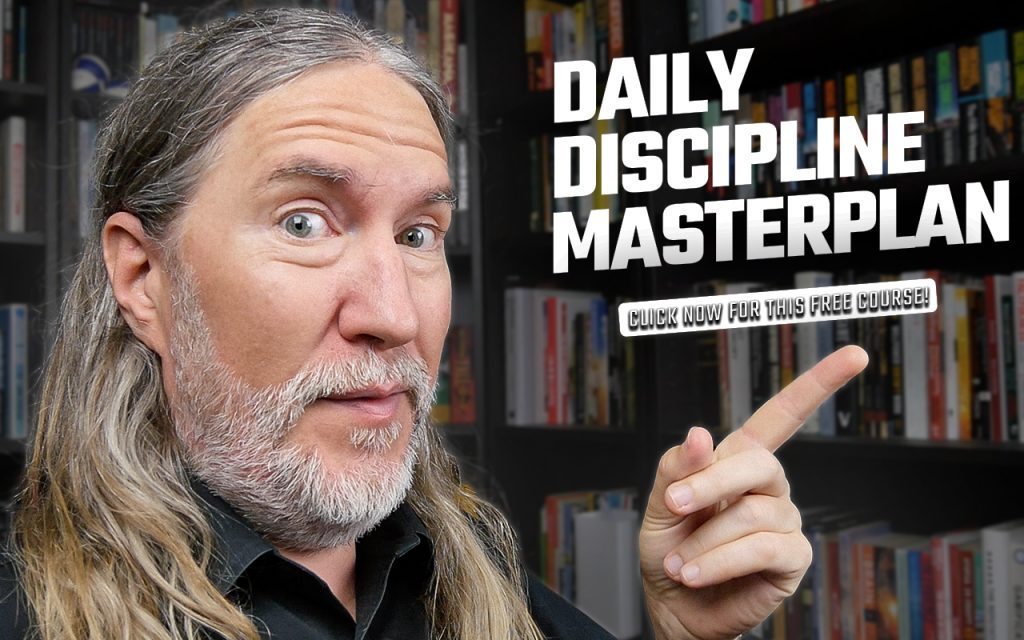Want to know the most positive meditation you can practice?
One that will skyrocket your positivity and make you feel happy without minimum effort?
I have the exact ingredients.
They’re ancient.
Scientifically validated in our time.
And incredibly fun to put into use.
The best part is that they stack together with other forms of meditation, such as gratitude meditation and movement-based meditations.
Ready to discover the special ingredients?
Let’s dive in!
What is Positive Meditation?
Seems like a silly question on its face.
But I think you’ll be glad I asked.
Positivity actually means many different things.
And with all due respect to the great philosophers, the Golden Rule is simply not as golden as they make it seem.
See, the idea that you should treat others the way you want to be treated completely falls apart if you’re a masochist or otherwise have a lot of dark thoughts you haven’t tidied up yet.
Plus, there are tons of cliches in the self help world.
So if you really want to help yourself out, it’s useful to find out what they are and root them out.
How to Eliminate Positive Meditation “Deepities”
“Deepity” is a term popularized by Daniel Dennett. It basically means something that sounds profound, but is actually empty.
Sometimes, deepities are even worse than empty. They’re bankrupt.
To give you an example, the other day someone pushed back on my criticism of “woo woo” in this video all about success with visualization techniques:
He and I wound up having a lovely conversation in the comments, but that’s because he was intellectually honest and I managed to make evidence-based arguments that made sense to him.
But the conversation started with him saying seemingly profound things about the law of attraction. It’s the stuff we’ve all heard before about vibrations in the universe and how we leave our fingerprints on them. Then he misrepresented Einstein and repeated notions about quantum mechanics that simply aren’t true.
The good news is that you don’t have to fall into these traps. And there’s no reason why you can’t be a skeptic devoted to reason and enjoy the best that the self help world has to offer.
But to keep alert, I suggest you make a serious study of self inquiry. And try to find meditation teachers who focus on the science first and foremost.
One person I can recommend is Gary Weber, the author of Happiness Beyond Thought. He is really great about gently helping people avoid “intellectual noodling” that is in fact creating the very same prison they’re trying to escape.
You can also help yourself by journaling the various “deepities” you come across. This practice is meditative, will help you develop pattern recognition as you think critically about which ideas are truly positive and worth pursuing.
Meditate On What Is Positive For You
The next step is to think about what exactly you want to experience.
In your journal, write at out least 5 characteristics of what defines the desired state. Here’s an example from me:
- Energy
- Love for others
- Mental silence
- Creativity when I want or need it
- Focus and concentration
Your list may be similar or completely different. The important thing is to create it using your own hands. As memory expert Lynne Kelly has pointed out, writing is a powerful “encryption” tool that will help you remember the characteristics you decide upon.
You can also create a positive meditation mantra for yourself.
One that I used for quite a few years was simply: “Each and every day, my positive energy, creativity, joy, love and compassion grow and improve in each and every respect.”
I still use that meditation sometimes, but these days I have many personal mantras. I also find it very uplifting to chant in Sanskrit, as I shared in this TEDx Talk:
Performing Your Positive Meditation
Once you have your definition of happiness and abundance written down, the rest is easy.
- Find a quiet place to sit
- Get comfortable
- Keep your spine as straight as possible
- Settle in with some breathing meditation if you find that useful
- Start to focus on your personal definition of positivity
- Maintain the positive state for as long as desired
You can also experiment with loving kindness meditation.
One simple exercise I like to do is use the alphabet to think about various people I’ve known and send them positive vibes.
In other words, I start with the letter A. Then I think of someone I know whose name starts with that letter. When I’m done thinking positively about them, I move on to the letter B and so on.
Keeping Positive Throughout Your Day
Keep in mind that you don’t have to use sitting meditation exclusively.
You can use positive reflection through the day as you walk around, commute for work or go about other tasks. Mobile meditation is one of my favorite things to do, particularly in combination with simple hand mudras.
Another tactic is to memorize music you find positive. In fact, the music doesn’t even have to have positive themes in order to make you feel better.
When I was a kid, for example, it made me miserable when my foster parents took my heavy metal music away. But scientists have found that heavy metal provides positive benefits. I often listen to it while in a yoga pose called shavasana. Combining the two while reciting my memorized Sanskrit makes me feel even more elated, happy and filled with energy.
How to Make Positive Meditation a Habit that Sticks
At this point, you might be thinking, “Great, but I’ve tried this kind of thing before. I’ve never been able to turn it into a habit, though.”
Here’s the good news:
If you keep coming at it, eventually you’ll experience a breakthrough.
And if you keep a journal, decide upon a specific time each day and work to get at least 90-days in a row, you’ll potentially rewire your brain. This is one of the findings in Daniel Coyle’s The Talent Code.
Let me reiterate what I’m saying here because some people will remain skeptical:
You don’t have to get through 90-days in order to benefit.
But if you’re willing to keep trying to do so, you up the chances that you will make it.
And this is really important because without the repeated attempts, your brain can’t make the neural connections needed to form the habit.
This is ultimately how I managed to craft my own daily meditation habit. I’ve managed to gather years of unbroken daily meditation, but to get there, the first habit I needed was the habit of continuing to start the chain.
Only by continually getting back on the horse was I eventually able to get in the saddle and stay on it for a substantial period of time.
I’m so glad I did because it turned me from a sour and grouchy loser into someone who is much happier, far more productive, and creative in ways I never dreamed possible.
Even better, I’m able to spend all day, every day, helping other people.
So, what do you say?
Are you ready to craft your own positive meditation habit?
If you need more help, get my Daily Discipline Masterplan. It has more ideas on how to craft your own breakthrough and keep it going no matter how many plates you’re currently spinning.


